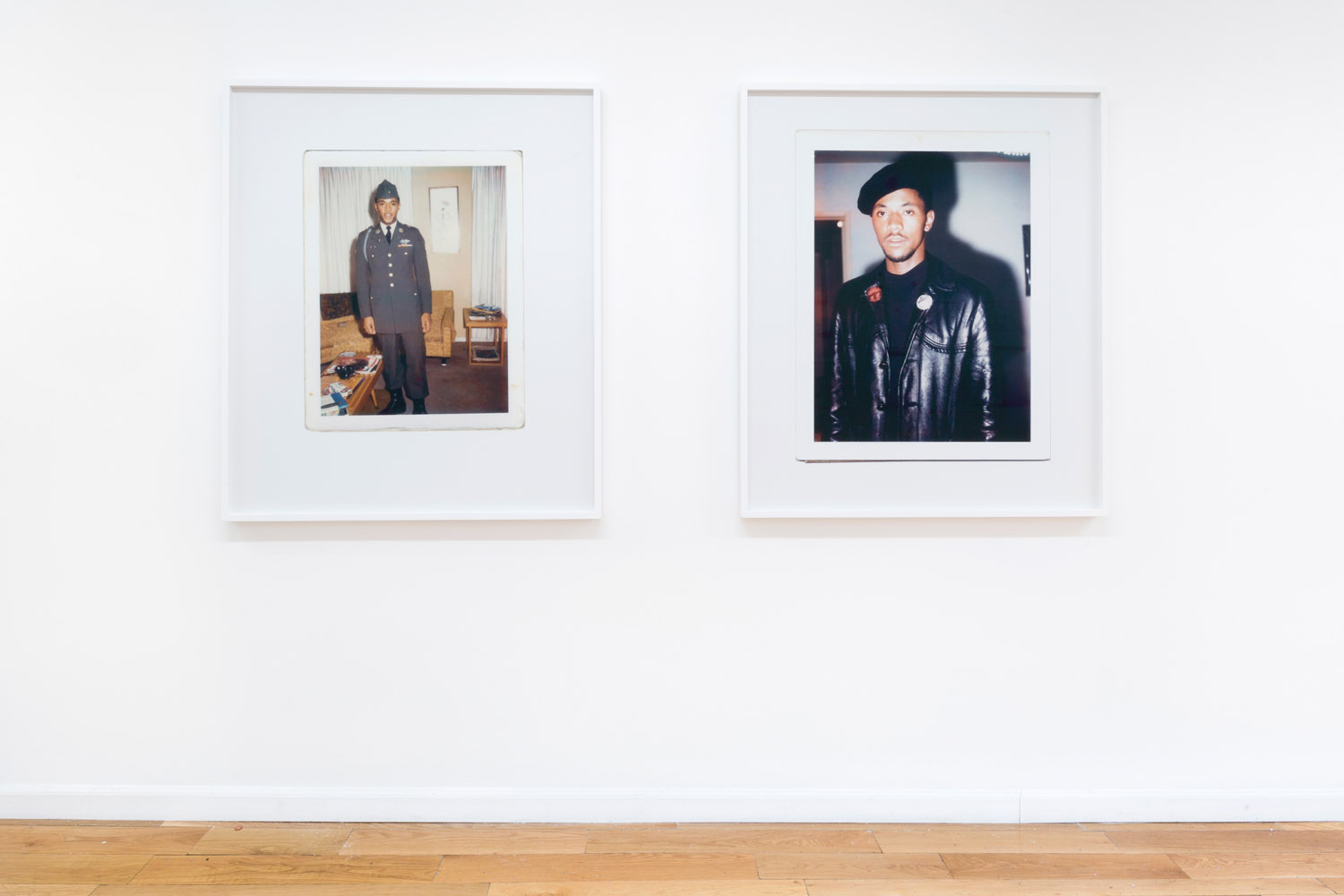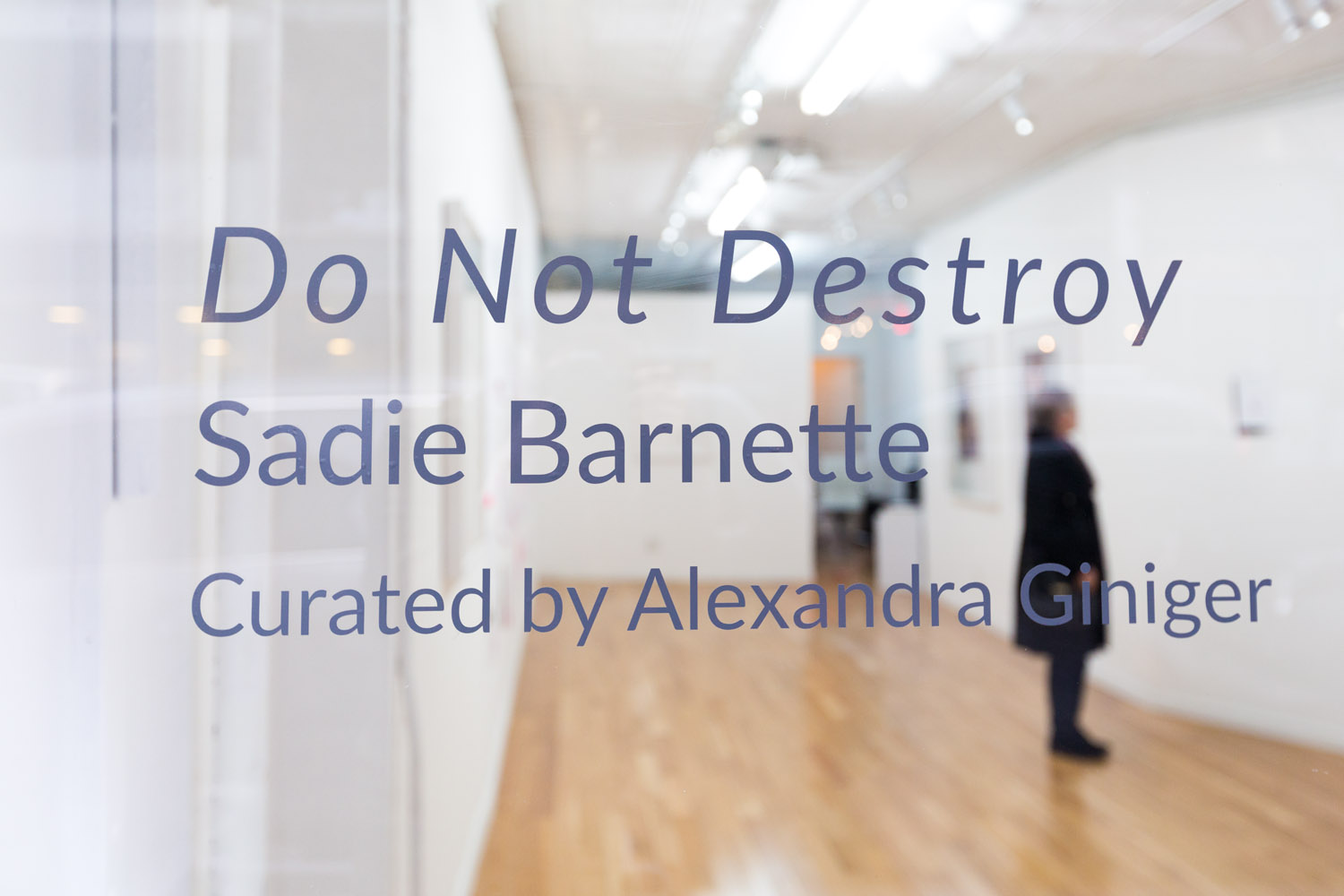In Conversation with Alexandra Giniger: A Radical Black Woman in the New York Art World
Portrait of Alexandra Giniger at the 'All That Glitters' group show at the Rachel Uffner Gallery. Photo by Sophie Finkelstein.
When I think of the legacy of the current Brooklyn Museum exhibit, 'We Wanted a Revolution: Black Radical Women, 1965-85', and who are the new millennial women of color shaping the art world, women like Alexandra Giniger come to mind. Born and bred in New York, based in Brooklyn, and educated at Georgetown University (BA,MA), Giniger has a diverse and rich career in the visual arts. I speak with the arts administrator, curator, and gallery director on her trajectory so far and what it means to be a nasty female today in 2017.
Gallery Gurls: You have a really impressive career so far, you've been Wangechi Mutu's Studio Manager and have held gallery directorships at Greene Naftali and now the Rachel Uffner Gallery. What have you loved about these roles?
Alexandra Giniger: Thank you! I’ve been fortunate enough to locate a very diverse range of experiences within the art world ecosystem.
It was such an extraordinary opportunity to launch my career as Studio Manager for an artist of the caliber of Wangechi Mutu. One of my major tasks included functioning as a liaison between Wangechi and the worldwide institutions and galleries in which her work is exhibited. It was precisely here, in my role as avatar and advocate for the artist, where I found my passion, which accompanied me as I moved into new positions in galleries representing a vast roster of artists who are active in a variety of media.
My strong relationships with global galleries and institutions allowed a smooth transition into my role at Greene Naftali Gallery, where I served as Managing Director. In this position, I gained a holistic view of how galleries function, particularly on the practical, business side, giving me a full understanding of the pairing of strong financials with artistic integrity, both of which are critical elements in securing the success of any art business endeavor.
Since beginning as Director at Rachel Uffner Gallery, I have been able to bring knowledge from past positions into the public domain by serving as point person for the gallery’s programming and represented artists. Additionally, I greatly enjoy maintaining studio visits with artists who may be new to the gallery audience. Most recently, this resulted in my organizing our Summer exhibition, a three-person show with new work by Maria Berrio, Derek Fordjour, and Ebony G. Patterson.
In all of these positions, I have most deeply enjoyed working directly with artists to support and develop their careers, while creating an accessible bridge between the art world and the global public. The opportunity to work in vibrant, art-filled spaces each day, while promoting provocative interrogation and creative commentary on our contemporary socio-political conditions, is wildly fulfilling to me.
"The opportunity to work in vibrant, art-filled spaces each day, while promoting provocative interrogation and creative commentary on our contemporary socio-political conditions, is wildly fulfilling to me."
Installation view of 'All That Glitters', work by Ebony G. Patterson, Derek Fordjour, and Maria Berrio. Courtesy of the Rachel Uffner Gallery.
You curated the recent exhibit 'All That Glitters' at the Rachel Uffner Gallery, it's such a magical show with deeper meanings. Tell me about the artist selection: Maria Berrio, Derek Fordjour, and Ebony G. Patterson and what the show is about?
I am very grateful to have had the opportunity to organize this gorgeous and meaningful show. The exhibition came together fairly quickly, so I'm humbled that these three artists trusted my vision and agreed to participate without hesitation.
Maria Berrio and I met earlier this year when I was asked by the curator, Trevor Schoonmaker, to write an essay about her work for the catalog of Prospect.4: The Lotus in Spite of the Swamp, which opens in New Orleans this November. Derek Fordjour and I have been friends for many years, and have discussed working together in the past; and, finally, I have long been an admirer of Ebony G. Patterson’s work after seeing it in several institutional shows.
I initially made the selection based on artists whose careers I have been following, and whom I felt would speak visually to one another’s practices. With a closer examination of each artist’s intentions, however, a more complex narrative revealed itself - one in which race, gender, nationhood, and all our efforts to construct meaning converge. Each artist included in the exhibition brings a unique, global perspective to their art making, which keenly examines both individual and collective identities that live beneath seductive surfaces.
"I am told that I first began describing myself as a feminist at the age 5, after learning the term from our family friend, Gloria Steinem."
Earlier in the year, you also curated Sadie Barnette's New York solo debut 'Do Not Destroy'. It was powerful to see the artist revisiting her father's activist legacy through her eyes. What did you walk away with from curating that show?
Sadie and I first became close in 2015, when she was an artist-in-resident at the Studio Museum in Harlem, and I have enjoyed watching her work and career develop ever since. Through my own professional journey I hold a driving interest in articulating the ways in which the political and the aesthetic can converge, and in such, I found myself very attuned to Sadie's work. Utilizing images and objects from the every day, the personal, and the collective historical, Sadie regenerates seemingly familiar cues, reimagining them as her own. Sadie's process reveals her to possess what Toni Morrison describes in her 1992 publication, Playing in the Dark: Whiteness and the Literary Imagination: a unique ability to "familiarize the strange and mystify the familiar."
Our collaboration was months in the making, but I found it particularly poignant that the show opened two days before this year’s presidential inauguration, and three days prior to the Women's March on Washington, D.C. This election, inauguration, and this presidency have been especially divisive and negatively charged, and I feel extremely relieved to have had the opportunity to present Sadie's work at this critical moment in history. Though much of the imagery included in the exhibition was drawn from the Black Panther and Civil Rights Movements of the late '60s and '70s, the calls for racial equality and social justice still ring urgently true today. Overlaid on these images is Sadie's liberal use of pink spray paint and glitter, which speaks to her toying with the idea of femininity and what it means to be a woman artist - another pressing point at this distinct moment in time.
"Rather than sit passively within the turmoil of the modern world, I view art as a tool with which to crack open the possibilities of cultural activism, with the hope of affecting social change."
At the exhibit Dare You To Look: Radical Realizations in Portraiture at Burning in Water Art, curated by Alexandra Giniger. Works hanging in this image are by Cheri Samba, Samuel Fosso, and Russell Young. Photo courtesy of the subject.
Tell me more about Oyster Knife Projects and what do you have coming up with this platform?
I am the founder of Oyster Knife Projects, a global arts consultancy firm focused on promoting and nurturing the careers of artists of color. The name “Oyster Knife” is taken from the Zora Neale Hurston essay, “How It Feels To Be Colored Me”, in which she writes, “No, I do not weep at the world—I am too busy sharpening my oyster knife.” This text has resonated with me since I first read it years ago, and I felt its sentiments completely aligned with my goals for the organization. Rather than sit passively within the turmoil of the modern world, I view art as a tool with which to crack open the possibilities of cultural activism, with the hope of affecting social change.
While the majority of projects which I have worked on under the Oyster Knife umbrella do have a social justice component, I also feel that something so seemingly simple as giving artists of color a platform on which to exhibit their work, and to tell our stories in our own vocabulary, under our own terms, can absolutely be considered a political act, particularly within an art world that is primarily white and male (from the artists given the most visibility, to the arts administrators making these decisions). To this end, Oyster Knife projects to date have included independent curatorial endeavors, as well as consultation with a variety of non-profits and activist organizations regarding arts outreach and cultivation.
I am happy to be working once again with Amref Health Africa, as a return partner on their annual Amref ArtBall. I also serve on the Advisory Committee of Wangechi Mutu’s artist-driven activist campaign, AFRICA’SOUT. One particularly fun project that I conceived for AFRICA’SOUT included commissioning a public art project and limited print run by artist, Tatyana Fazlalizadeh, for which the artist interviewed individuals living in East Africa and created unique portraits, in wheat paste and print, based on their narratives. I have had the pleasure of working with both AFRICA’SOUT and Amref Health Africa since their inaugural fundraisers, and it has been enormously rewarding to do my part in helping them grow.
Recently, I was approached for consultation by a friend who is in the process of building out an entrepreneurial hub in Inglewood, CA, which will provide programming to the surrounding community, and which she hopes will include an arts component. Further, I am in the very early stages of helping to formulate an entity that would empower equal housing rights through the mechanism of visual arts. I am passionate about serving as a bridge between the art world and non-arts organizations that are similarly interested in the power of art to activate radical change, so these are the sorts of endeavors that truly pique my interest.
"I would say that my endeavors, as a woman of color, to disrupt traditional art world constructs most definitely have a nasty vibe."
Photo by Sophie Finkelstein.
Lastly, in your own words why are you a nasty woman?
I am told that I first began describing myself as a feminist at the age 5, after learning the term from our family friend, Gloria Steinem. It was this identity that fueled my desire to attend an all-girls school, starting in Kindergarten. My first pet (an all-black gerbil from science class at said Kindergarten) was named Tina for Ms. Turner, who was my favorite singer at the time, and I’ve consistently found examples of Nasty Women to look up to throughout my life. (I found it funny and fortuitous when Grace Jones’ tour rider was published and included on the list an oyster knife, as “Grace does her own shucking”.)
I was raised by strong women, who encouraged me to follow my passions freely and to voice my opinions without fear. I am grateful, also, that I continue to enjoy a multitude of powerful women whom I regard as colleagues, mentors, friends, and ultimately cohorts in a joint artistic mission - Wangechi Mutu, Isolde Brielmeier, Nicola Vassel, Adrienne Edwards, Rujeko Hockley, Zoë Buckman, Sadie Barnette, Deb Willis, Joeonna Bellorado-Samuels, and Thelma Golden, to name a few - without whom the art world would be a very different tapestry.
I would say that my endeavors, as a woman of color, to disrupt traditional artworld constructs most definitely have a nasty vibe.
Follow Alexandra Giniger on Instagram: @nola_darlinn













